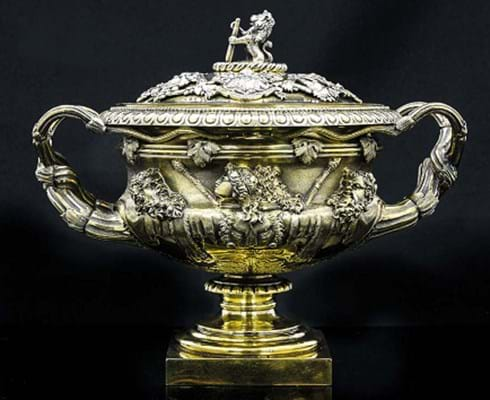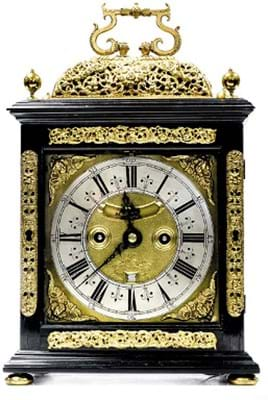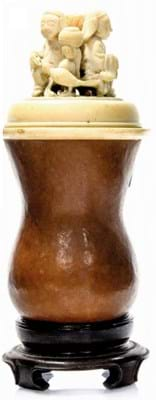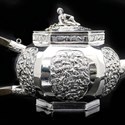REVERSING the familiar trade winds of Oriental material sourced in Britain, it was British material sourced in the Far East which formed the backbone of the December 19 sale at Hansons (17.5% buyer’s premium) of Etwall.
The consignment won by the Derbyshire rooms was from the estate of a ‘late eminent Hong Kong lawyer’, giving rise to conjecture that it was linked to the Chen collection, amassed by the late Sinclair and Ray Heather Chen through London dealers in the 1980s and ’90s.
The best of the collection, including Russian enamels and works by Paul De Lamerie and Paul Storr, was sold by Lyon & Turnbull for close to £4m in 2008.
Auctioneer Adrian Rathbone observed the familiar discretion regarding the name of his vendor. However, unrestricted by ambitious expectations, Hansons could value the consignment realistically.
East met West in a couple of pieces of classic London silver in the chinoiserie style – a Paul Storr 1818 teapot and pair of 1824 candlesticks by Robert Garrard.
The 25oz hexagonal teapot with embossed vignettes of Oriental scenes and a figural finial was stamped for Storr & Mortimer. Estimated at £2000-4000, it went to the London trade at £5800. The 118oz, 12¼in (31cm) tall sticks, each heavily cast with an eagle, dragons and a lion’s head, also went to the trade, going within estimate at £5100.
Topping the silver section was a later pair of figural candlesticks.
By John Beresford, London 1875, the 13¾in (35cm) tall pair featured Dionysius and Venus, each seated on rocks with an infant in their laps and with raised arms holding the sconces. Weighing 15oz, they were another trade buy, a shade above estimate at £8100.
An Australian bidder moved in to secure two lots from a testimonial dinner service modelled on the Warwick Vase and presented to the Belfast politician, traveller, Governor of Ceylon and member of the Royal Society, Sir James Emerson Tennent.
Four 5in (13cm) wide salts, stamped B[enjam] Smith III, Lin[coln]s Inn Fields, London 1842, went comfortably over estimate at £6100. A similarly stamped, 7in (18cm) high tureen and cover with a crest finial of a rampant lion holding a club made £7400 against an estimate of £3000-5000.
Best price of the consignment came for a William & Mary ebonised bracket clock signed for Benjamin Merriman, London (fl.1682-1734). Illustrated above, the 16in (40cm) high clock in a gilt frame with cast putti corners carried hopes of £6000-8000 and sold to the UK trade at £11,500.
Solid English furniture sold well enough in today’s tough market. Going well above expectations were a Victorian mahogany partners’ desk at £3000, a 19th century Gillows of Lancashire whatnot at £1500 and a pair of early 20th century, Chippendale-style mahogany and upholstered open armchairs at £3600.
The sale did include some Oriental works of art, the best of which was a carved ivory and gourd cricket cage.
These items have been produced in China for at least 1500 years, first to hold the insects for their singing and later for pitting them against each other in the manner of cock fighting.
The Hansons’ example, featuring a reticulated lid with two figures as a finial, was no earlier than 19th century. However, against a £150-250 estimate, it sold to a Hong Kong bidder at £2600.
The gamble on holding a sale so close to Christmas seemed on paper to have failed when none of the 78 lots of wines and spirits in the catalogue appeared on the sales sheet. A mass conversion to Rechabite teetotalism among Hansons’ clientele? All of them having already stocked up at Lidl?
In fact, neither: the local licensing authorities ruled at the last minute that Hansons had already sold its annual alcohol quota for 2016 and the stock will be offered again this year.
















